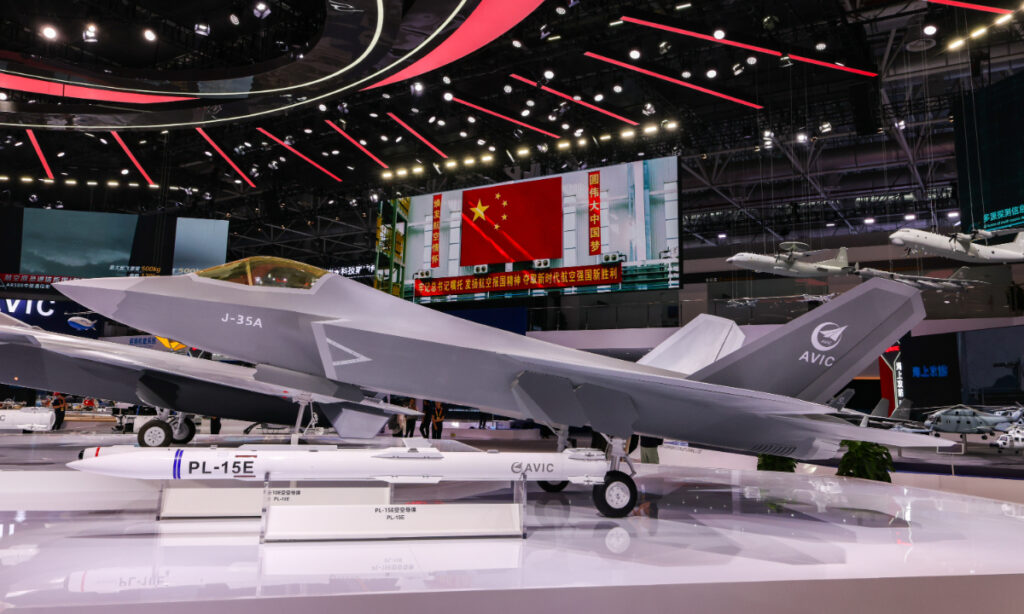Regarding the J-35A’s capabilities, Wang said that the key features include enhanced stealth, informatization, network integration, and intelligence capabilities. Since the users have set higher requirements for stealth, the aircraft developer has implemented many new technological measures and systems. In the process, notable progress and innovations have been realized across multiple areas.
The J-35A is designed to adapt to advancements in technology, shifts in warfare, and evolving threats. Driven by the transformation of air combat mechanisms and the advancement of new technologies, it prioritizes information warfare, collaborative operations, and multi-domain combat. As a tactical organizer on the regional battlefield, it optimizes and extends the value of existing assets, playing a crucial role as a key node in future systems, Wang said.
When asked about the technical aspects of the J-35A and how it can collaborate with other aircraft, Wang said that the J-35A functions within both stealth and counter-stealth combat frameworks. Its mission focuses on gaining and maintaining air superiority, eliminate hostile fourth/fifth generation fighter jets and ground/surface air defense forces, as well as intercept aerial hostile targets including fighters, bombers and cruise missiles.
In combat against previous generations of aircraft, the J-35A can operate beyond enemy detection, achieving a unilateral battlefield awareness and possessing overwhelming advantages that disrupt traditional air combat patterns. In engagements with aircraft of the same generation, it can leverage its strong lethality and survivability, along with advanced coordinated formation tactics, to obtain accurate situational information and establish a rapid and stable closed-loop kill chain against the enemy, thereby seizing the initiative, according to Wang.
Wang said that the J-35A can also organize other elements and form a killing network on the battlefield. Comparing the systematic combat system with a net, he noted that the aircraft is a key node in the net, making the net stronger.
At the AVIC exhibition hall at the Airshow China 2024, both the J-35 carrier-based fighter and the J-35A were displayed.
Wang said that the J-35 series utilizes a “one platform, multiple types” and “air-sea dual deployment” development approach. The general design, airborne system design and key technologies were highly reused, so the maturity of key technologies and reliability the weapons were greatly increased, while significantly reducing development and production costs. This will contribute to the mass production of China’s aerial national defense forces and boost combat capabilities.
The “one aircraft, multiple types” means that the J-35 and the J-35A’s roles and missions are not completely the same, and the development focuses were not completely the same. But since they share the same platform, the concepts “one aircraft, multiple types” and “air-sea twin-borne” are conducive to cross-service joint operations, according to Wang.
